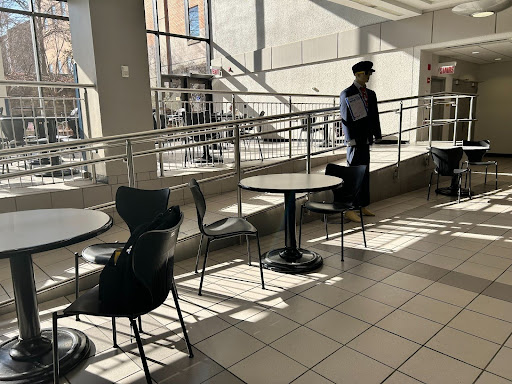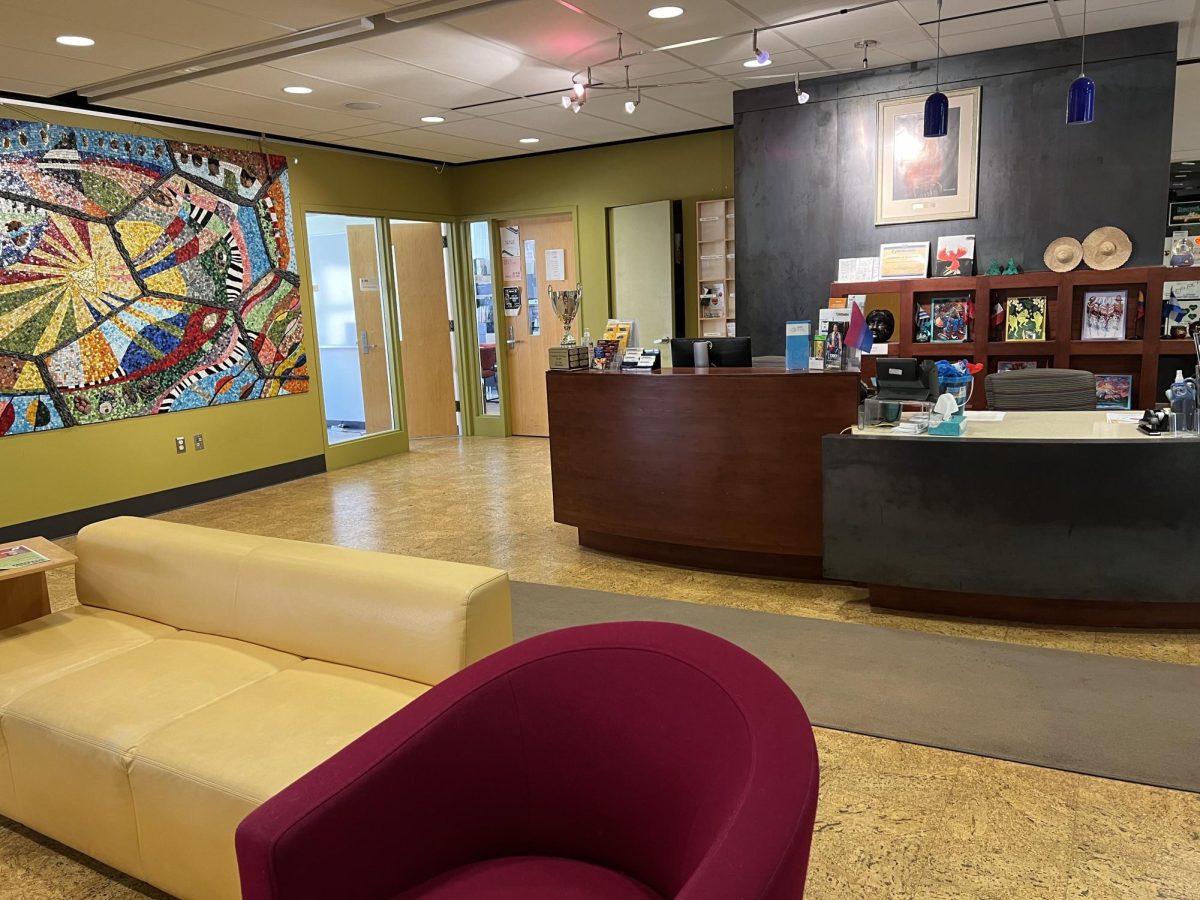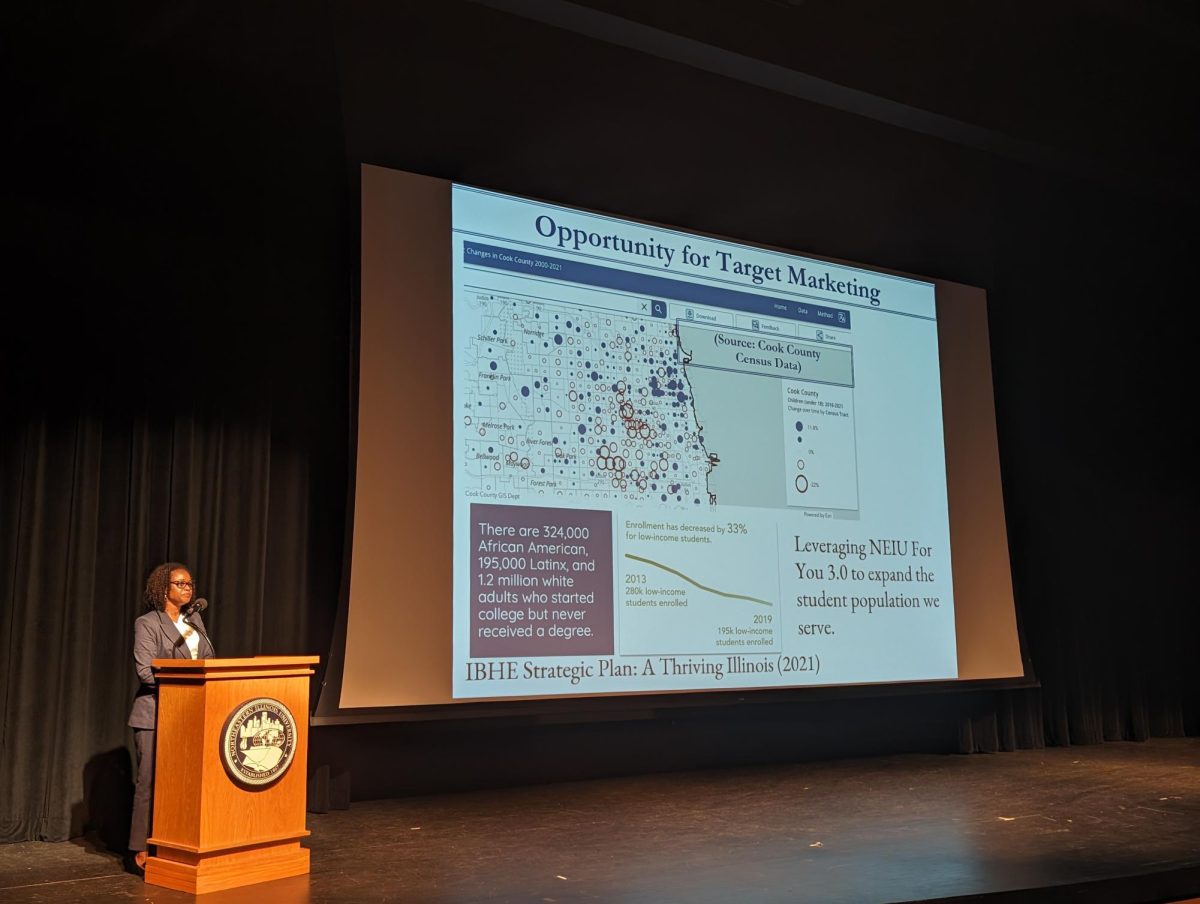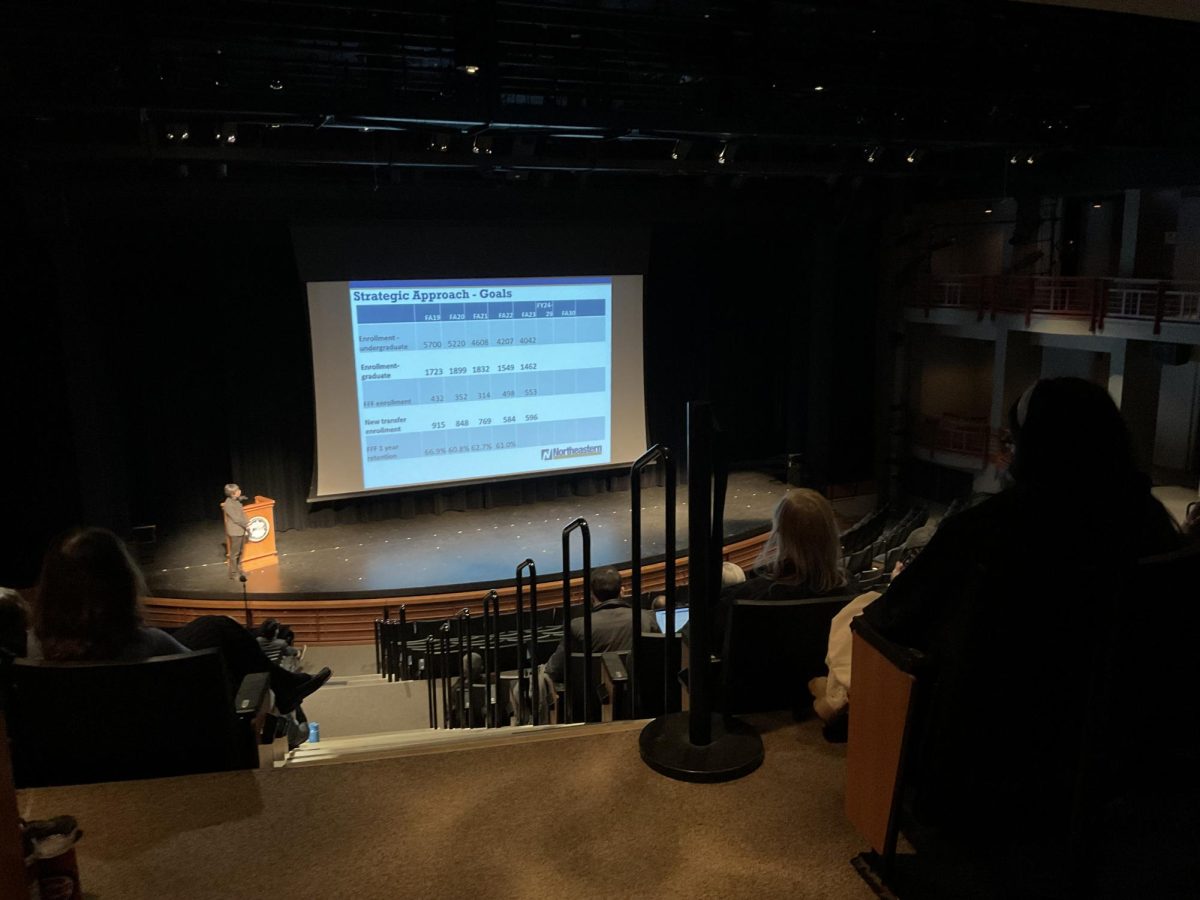One of the most popular spaces at NEIU is the cafeteria which gives students a social and physical space. The accessibility of the entire cafeteria in general at all times matters towards the individuals with disabilities.
The cafeteria can be a good option for the students with disabilities. “I think the cafeteria is a good option for students with disabilities on campus, especially if they have limited time between classes and need a quick and convenient place for lunch or breakfast,” Program Specialist Nathan Rouse from the Student Disability Services (SDS) office stated.
Sam Helgerson is a student with a disability at NEIU and sometimes spends her time at the cafeteria eating by herself or with a friend. “Yes, I do feel comfortable. Whenever I can’t reach for something I ask for help,” Helgerson stated.
According to NEIU’s Office of Equity, Diversity, and Inclusion, “Accessibility” is the condition of meeting the access needs of those individuals who want and need to participate fully in a space, activity, or group. Everyone has access needs and everyone is entitled to equitable access. The needs can be physical, sensory, learning, and emotional among many other things.
Food allergy is indeed one type of disability within the cafeteria. According to Allie Grasgreen’s “Dining Disabilities” published by Inside Higher Education, The U.S. Department of Justice declared in 2012 that anyone with a food allergy is protected by the Americans with Disabilities Act (ADA). When Eli Alvarez, a junior at NEIU, was asked about her opinion on the accessibility of the food, she went above and beyond. “The food has little access due to the fact that individuals may have food restrictions and these foods may not fit the restrictions of the individuals,” Alvarez stated. It was found in 2021 by the National Health Interview Survey that approximately 62% of American adults had a food allergy. Food allergies cause students difficulty being able to socialize with friends during meals. “Only if they have food that they like. It doesn’t have a variety of stuff,” Helgerson stated when asked if she recommends other students with disabilities to stop by at the cafeteria.
The cafeteria isn’t accessible when it comes to the learning aspects. Since the cafeteria displays its two main menus on televisions, this may not be the best fit for a student who lives with dyslexia everyday. Individuals with dyslexia have a difficult time reading at a normal rate without any mistakes.
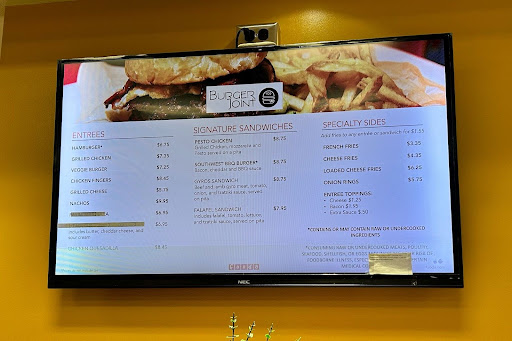
Photo 1.
The cafeteria isn’t accessible for individuals who live with claustrophobia everyday. Individuals with claustrophobia have the irrational fear of cramped spaces. Individuals with claustrophobia may have an uncomfortable experience due to all the chairs being clustered around together. The cafeteria may also not be accessible for individuals who live with anxiety everyday. Anxiety is the feeling of fear, dread, and uneasiness. Individuals who live with anxiety everyday may have an uncomfortable experience while ordering and paying for their food.
When it comes to the physical aspect of the cafeteria, there are many pros & cons. The cafeteria has many tables in which an individual in a wheelchair can easily sit in along by moving the chairs to the sides. The cafeteria also includes two ramps (which can help students in wheelchairs), two automatic doors (can be helpful for students with physical & vision impairments), and the trash cans are also accessible for recycling & general trash.
The elevator is also accessible, but only to a certain extent. What do I mean by this? The elevator works great for individuals in wheelchairs, physical impairments, & chronic illnesses, but what happens when the only elevator at the cafeteria stops working? Students with physical impairments won’t be able to access the cafeteria.

The stairs aren’t a solution to ALL students with disabilities. The cafeteria is a challenge as a physical aspect when it comes to the use of the fridges and drink dispensers. An individual with a physical impairment may need assistance from one of the lunch employees or from a friend in order to get a drink. Ideally, an individual shouldn’t ask for assistance to be able to enjoy or complete important tasks.
When it comes to the sensory (hearing, vision, or both impairments) aspect of the cafeteria, there are MANY cons and just a very few pros. The two menus at the cafeteria are only displayed on television screens.
This is a disadvantage towards an individual with a vision impairment because another person may need to assist the individual living with a vision impairment by having to tell them the food options. While a student is ordering food, the employee tends to ask the student if they would like everything on their burger in which this can be difficult for an individual with a hearing impairment. After the student finishes ordering, the student has to wait to be called up to the front to get their finished order. This is also a big disadvantage because it can be very difficult for a student with hearing impairments to be able to accommodate themselves with the cafeteria regulations. The very small advantage of the cafeteria is that it has microwaves in which the microwaves have braille dots to help students with vision impairments.
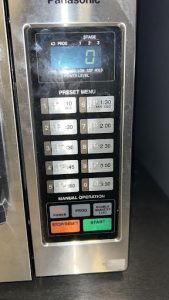
The female & male bathrooms in the cafeteria may bring disadvantages and challenges towards an individual with a physical disability. The two bathroom entrance doors aren’t automatic doors and instead they use a small, thick piece of wood to hold the both doors open at all times. The soap dispenser and blow dryer can bring limitations to an individual with physical disabilities. The two advantages of the bathroom are the automatic female products, washing machines, and the big stall at the corner.
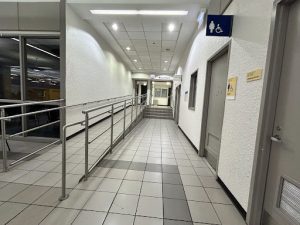
“Since the cafeteria is in the basement level of the building, it can be difficult to access if, for example, the student is in a wheelchair. If the elevator that leads directly to the cafeteria is out of service, that could absolutely be a cause for concern and would likely deter the student from attending the event entirely. If I were hosting an event in the Student Union and taking into account the needs of students with disabilities, it would probably not be the most ideal choice,” Specialist Rouse from the Student Disability Services (SDS) office stated in regards to making changes in the cafeteria for events. After evaluating the information, there are many improvements that could be made in the cafeteria. The female and male bathroom entrance & stall doors can both be improved by having automatic doors. The cafeteria can also improve a lot by installing self-service kiosks technology (touchscreen or by voice). Self-service kiosks allow an individual to customize their meal and offer countless payment options. For vision impairments, a physical menu with braille dots may be very helpful. Last but not least, a big improvement that can be done in the cafeteria is having signs posted about allergens.
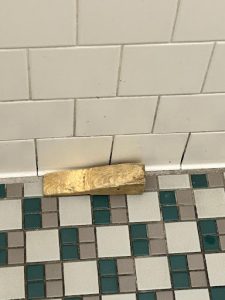
How can we raise our voices for the students with disabilities? There are many ways in which we can make their voices heard. “Ways we can make voices of individuals with disabilities heard is asking them how can we support you without asking them specifically what their disability is and or how we can support them as an overall,” Alvarez stated.



